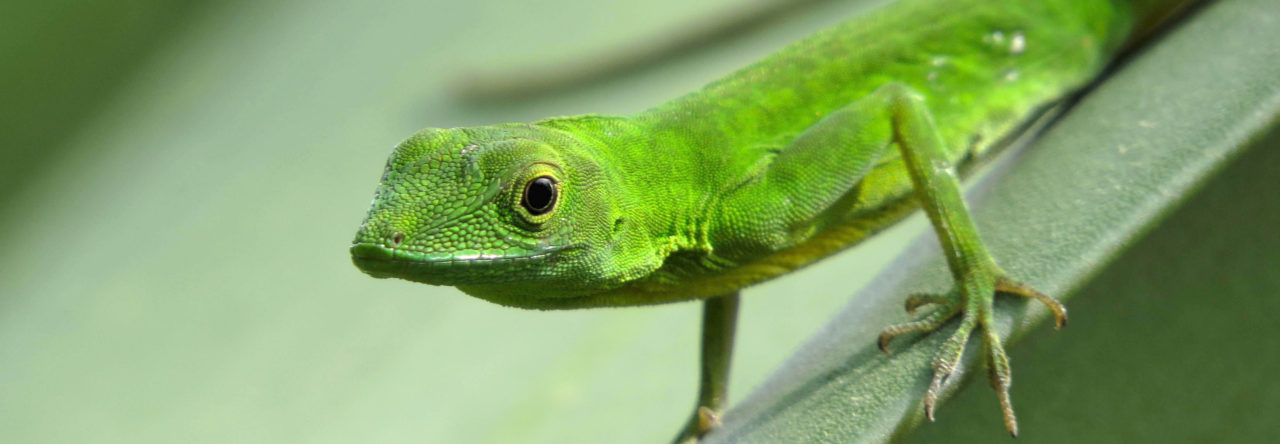
Anolis ventrimaculatus. Photo by Diego Garcés
Morphological differences between the sexes and among populations have been studied extensively in Caribbean anoles, but—like so many other aspects of biology—not so much in mainland species. Studies in the islands suggest that differences, both sexual and geographic, often represent adaptation to different conditions, either the sexes partitioning niches or populations adapting to different circumstances.
Martha Calderon and colleagues have just published a paper in Revista de Biología Tropical on variation in the Colombian anole A. ventrimaculatus. Examing museum specimens from seven populations, they find consistent size dimorphism (males larger) and substantial dimorphism in body proportions. The extent of these dimorphisms, however, varies among sites.
Unfortunately, at this time little is known about the habitat use and general ecology of this species, much less about differences among populations, so evaluation of the potential adaptive significance of this variation awaits further fieldwork.
The paper’s abstract:
Variation in body characteristics related to lizard locomotion has been poorly studied at the intraspecific level in Anolis species. Local adaptation due to habitat heterogeneity has been reported in some island species. However, studies of mainland species are particularly scarce and suggest different patterns: high variability among highland lizards and poorly differentiated populations in one Amazonian species. We characterized interpopulation variation of body size and shape in the highland Andean Anolis ventrimaculatus, an endemic species from Western Colombia. A total of 15 morphometric variables were measured in specimens from the reptile collection of the Instituto de Ciencias Naturales, Universidad Nacional, Colombia. The study included individuals from seven different highland localities. We found size and shape sexual dimorphism, both of which varied among localities. Patterns of variation in body proportions among populations were different in both males and females, suggesting that either sexual or natural selective factors are different in each locality and between sexes. Since this species exhibits a fragmented distribution in highlands, genetic divergence may also be a causal factor of the observed variation. Ecological, behavioral, additional morphological as well as phylogenetic data, may help to understand the evolutionary processes behind the geographic patterns found in this species. Rev. Biol. Trop. 61 (1): 255-262. Epub 2013 March 01.
- Evolution in Real Time on Lizard Island - March 23, 2025
- Spider Snags Adult Anolis osa - March 22, 2025
- An Homage to the Green Anoles of New Orleans - March 21, 2025


Leave a Reply